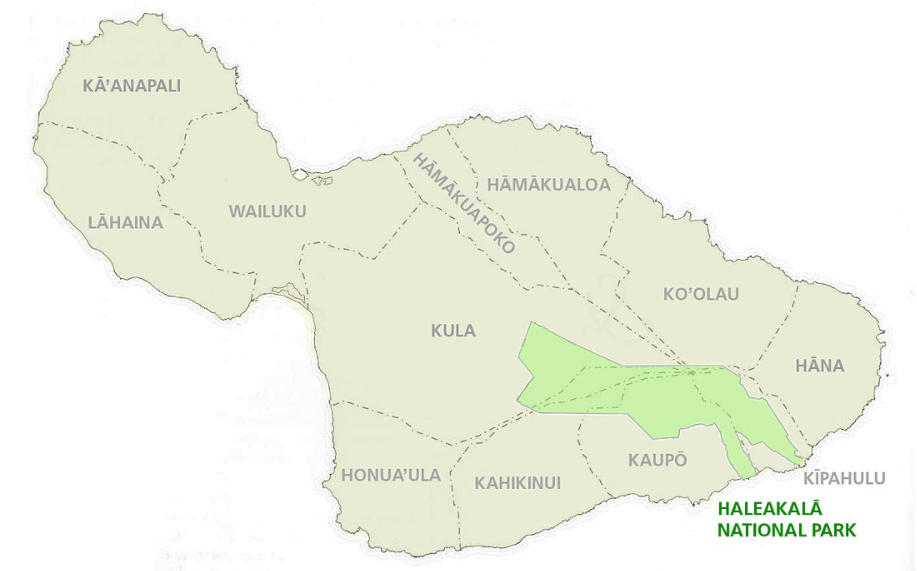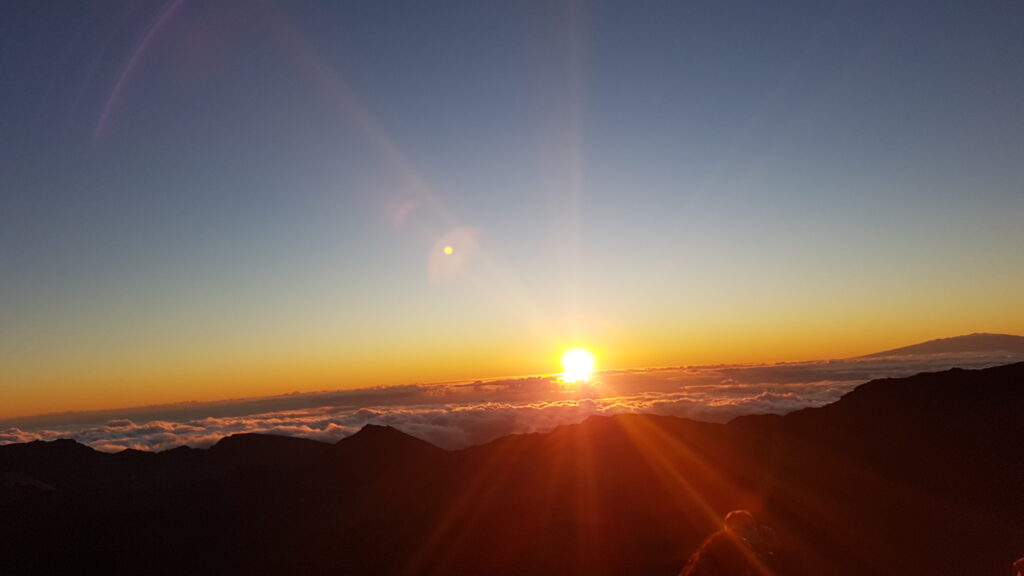
There are plethora of fun activities to do in Maui, from lazy sun bathing to snorkeling and whale watching. But if I had to choose the most memorable activity on the island that would be the sunrise at Haleakala volcano. Truly, out of many natural world wonders I’ve seen, watching the magic transformation of night into the morning is on the top of my list. In this post I’ll share tips and suggestions to make the best out of this incredible adventure.
Volcano’s facts
First thing first, let’s see what is so special about this place. Located on the south-eastern coast of the island Maui (Hawai’i), the dormant volcano (inactive for the past 400 years and second-largest of the Hawaiian Islands chain) is part of the Haleakala National park. At 10,023 feet above sea level (higher than Machu Picchu) the volcano’s main feature is its crater. Haleakala crater, which translates as “house of the sun” in Hawaiian, looks rather like valley with astonishing sights. The barren, reddish/greenish/brown scenery resembles rather Mars than Earth.
“It [sunrise] is the sublimest spectacle I ever witnessed.”
– Mark Twain

How to get to Haleakala National Park
There are generally 2 ways to visit the park: either driving in the car (there are no buses going there) or taking a tour. I had taken the sunrise tour and on the way back we rode bikes (around 20 miles downhill of exhilarating fun). Hawaii State Road 378 takes directly to visitor’s center. The center has limited parking space, so earlier the better. Keep in mind that hours and access to the park might fluctuate due to the ongoing covid-19 precautions. The visitor’s center is currently closed. I strongly suggest checking website in order to know the most updated information.
Most people attend either sunrise at Haleakala or sunset, but during the day visitors can take a hike on the Sliding Sands Trail or the Halemau’u Trail which leads into the crater. Also camping, horse riding are possible. Obviously, the economic way is to rent a car although I’d recommend taking a tour as well. If you are planning to witness sunset/sunrise, before jumping in the car and heading out, make sure to get reservation. At the time of writing this post the first available day is at the end of March, so it’s common to have tickets booked out couple months in advance.
What to pack
- If visiting for the sunrise then bring warm cloth. Layers, layers, layers of cloth. Due to the height of the crater the weather on the top can get very cold and windy
- Bring water and snacks, stores, services, and lodging are all at least 30 minutes away.
- Sunglasses, you see me squinting on the photo
- Altitude sickness pills, if needed
Sunrise time table
| Month | Sunrise time |
| January | 6:56 am |
| February | 6:48 am |
| March | 6:39 am |
| April | 6:12 am |
| May | 5:50 am |
| June | 5:38 am |
| July | 5:41 am |
| August | 5:52 am |
| September | 6:02 am |
| October | 6:10 am |
| November | 6:20 am |
| December | 6:38 am |
My personal experience
Any sunset/sunrise on its own is very beautiful scene and sometimes we take it for granted. Watching these natural events from the height only intensifies the colors and modifies the scenery. The sunrise at Haleakala was extra special because it included fun bike ride after. The tour had started at 3 am at night and ended at 11 am. After breakfast (yes, the night breakfast) we were given extra layers of warm cloth and taken on the shuttle to the Haleakala National park. The spectacle lasted for half an hour or so. It was incredible to go from pitch black night into bright morning with sun rays directly pointing at you. There is such strange feeling of uniqueness, for a second it seems like the sun raised specifically for you on that day. A visitor gets to see the very first appearance of sun on the island and that is pretty incredible.


The road back was super fun, riding a bike downhill on the highway was extremely fun! Who wouldn’t want it?! By gradually descending from the volcano you can feel the weather change, greener and thicker vegetation, and apperance of cattle. I was amazed to see some unforgettable sights of Maui farm country: horses grazing the land, chickens crossing the road. All in all I was very happy to take the tour even though it cost me arm and a leg.
